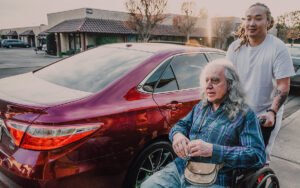
The decision to end 2020 Census data collection on September 30—a month earlier than the previously announced October 31 deadline—could lead to undercounts among communities of color, immigrants, and people living in rural areas. The impact of the early end to the census count on the disability community, however, has gotten far less attention.
A low count could lead to inadequate funding for vital federal services that people with disabilities rely on to stay at home with their families rather than being placed in nursing homes and congregate facilities, which, as current events have revealed, are often breeding grounds for dangerous illnesses like the novel coronavirus. Simply put, if people with disabilities do not participate in the census, the likelihood that Congress will fail to allocate adequate resources to support us living among—and working on an equal basis with—our non-disabled peers also increases, thereby decreasing our options for living independently within our communities.
To prevent this from happening, and to continue building a more fair and equitable future, one important thing we all can do is complete the 2020 Census form. As our nation once again reckons with the important changes that we need to achieve social justice and equity for every person living in the US, we owe it to ourselves to consider how the humble census helps us attain these common goals.
I am no stranger to a good fight, especially for those in the disability community. Disability activists have fought in my home state of California, nationally, and globally to change society’s attitudes and discrimination against our community—a community any person can join in an instant. In 1977, a coalition of demonstrators occupied government buildings in support of Section 504 of the Rehabilitation Act of 1973. The provision prohibited recipients of federal aid from discriminating against anyone with a disability. The regulations were a precursor to the Americans with Disabilities Act (ADA). With the ADA having commemorated its 30-year anniversary last month, we want to make sure the rights we fought for are funded—by making sure everyone is counted by the Census.
The 2020 Census is here—and it’s a fight we all have the right to engage in. If people with disabilities are undercounted by the census, then we will once again be “left behind” in our own communities, and we won’t be represented—not in Congress, and not by congressional funding allocations. Dollars that belong to everyone, and particularly people with disabilities, will be spent elsewhere—or not allocated at all.
The census is one small step in the pursuit of equity and rights. It is not the only one, but it is an essential part of a larger movement. It’s foundational to our nation—counting every person living in the country regardless of age, race, ethnicity, religion, or citizenship.
Sign up for our free newsletters
Subscribe to NPQ's newsletters to have our top stories delivered directly to your inbox.
By signing up, you agree to our privacy policy and terms of use, and to receive messages from NPQ and our partners.
While there isn’t a question about disability on the census form itself, funding for the essential services and support that people with disabilities and older adults rely on to live in the community are determined by the total number of people counted every ten years during the census. In practical terms, this means if a million people require vocational rehabilitation and the official count is 800,000, the needs of 200,000 people with disabilities and seniors won’t be met.
The census also determines 100 percent of federal funds that are set aside and distributed to local communities for:
- Title I Grants to Local Educational Agencies
- Medical Assistance Programs
- Economic Adjustment Assistance
- State Children’s Insurance Programs
- Vocational Rehabilitation Grants to States
- Emergency Food Assistance Programs
In addition, special education grants, as determined by the census count, help provide vital resources to disabled students in every city, state, and community.
As a board member of the Disability Rights Education & Defense Fund, I’ve seen the good work in California to get the word out about the census to those who typically are least likely to respond. In partnership with the California Foundation for Independent Living Centers, we are educating Californians about the census, how to complete the form, and emphasizing that participation is safe. Your answers on the census won’t affect individual SSDI (social security disability insurance), SSI (supplemental security income), SNAP (supplemental nutrition assistance program) benefits, or any other form of government assistance. Your responses to the 2020 Census are also protected by federal law.
Put simply, the only thing people with disabilities and older adults should fear about completing the census form is what our communities stand to lose by not being counted. We owe it to ourselves—and each other—to do everything we can to make sure our communities are counted during the 2020 Census.
Take up a cause and fill out the census…for people with disabilities, our families, and for the disability community as a whole. You can make a difference for the next decade. You can fill out the census online at my2020census.gov or by phone in English at 844-330-2020. No invitation or code is necessary in order to participate.










